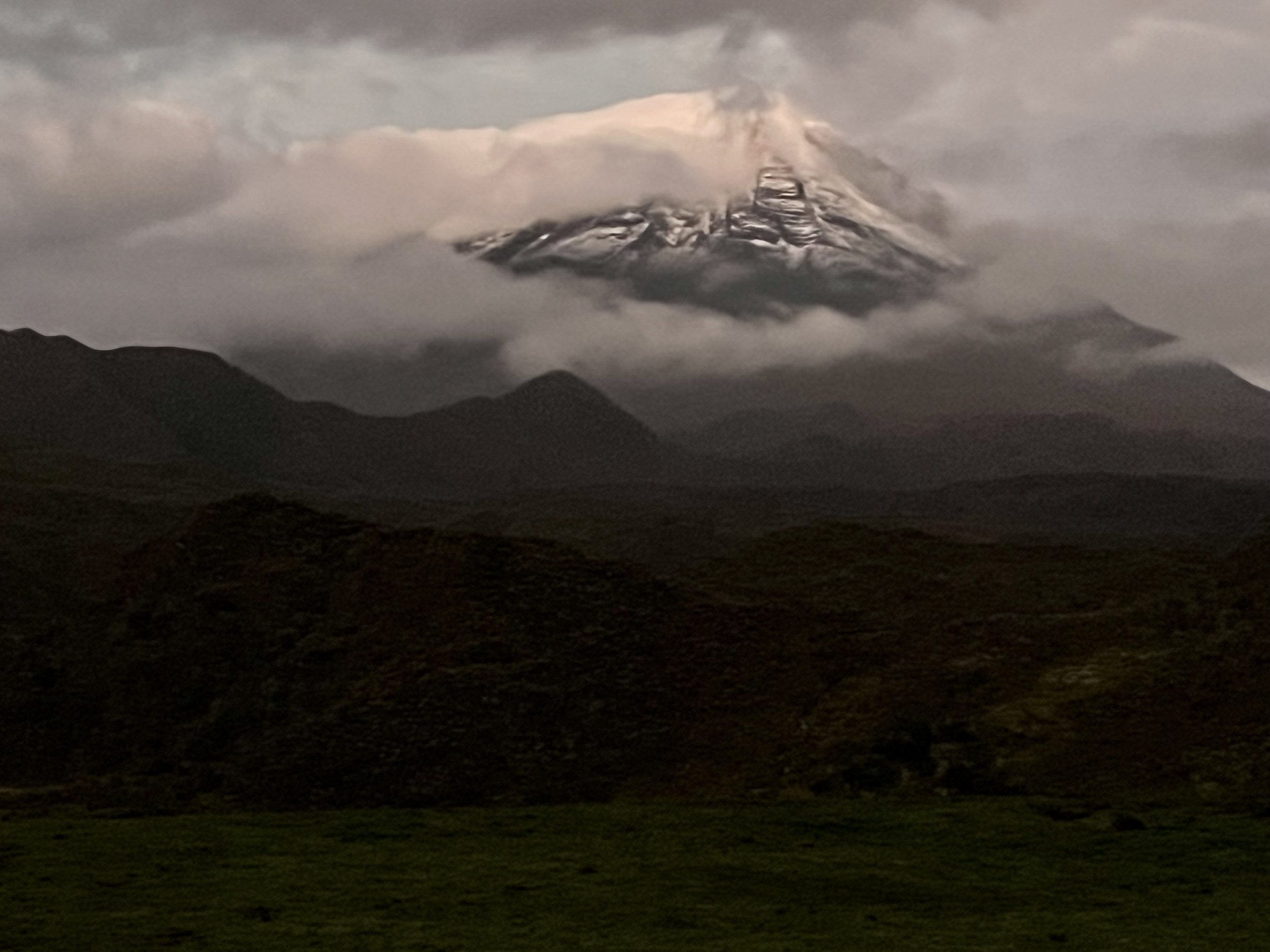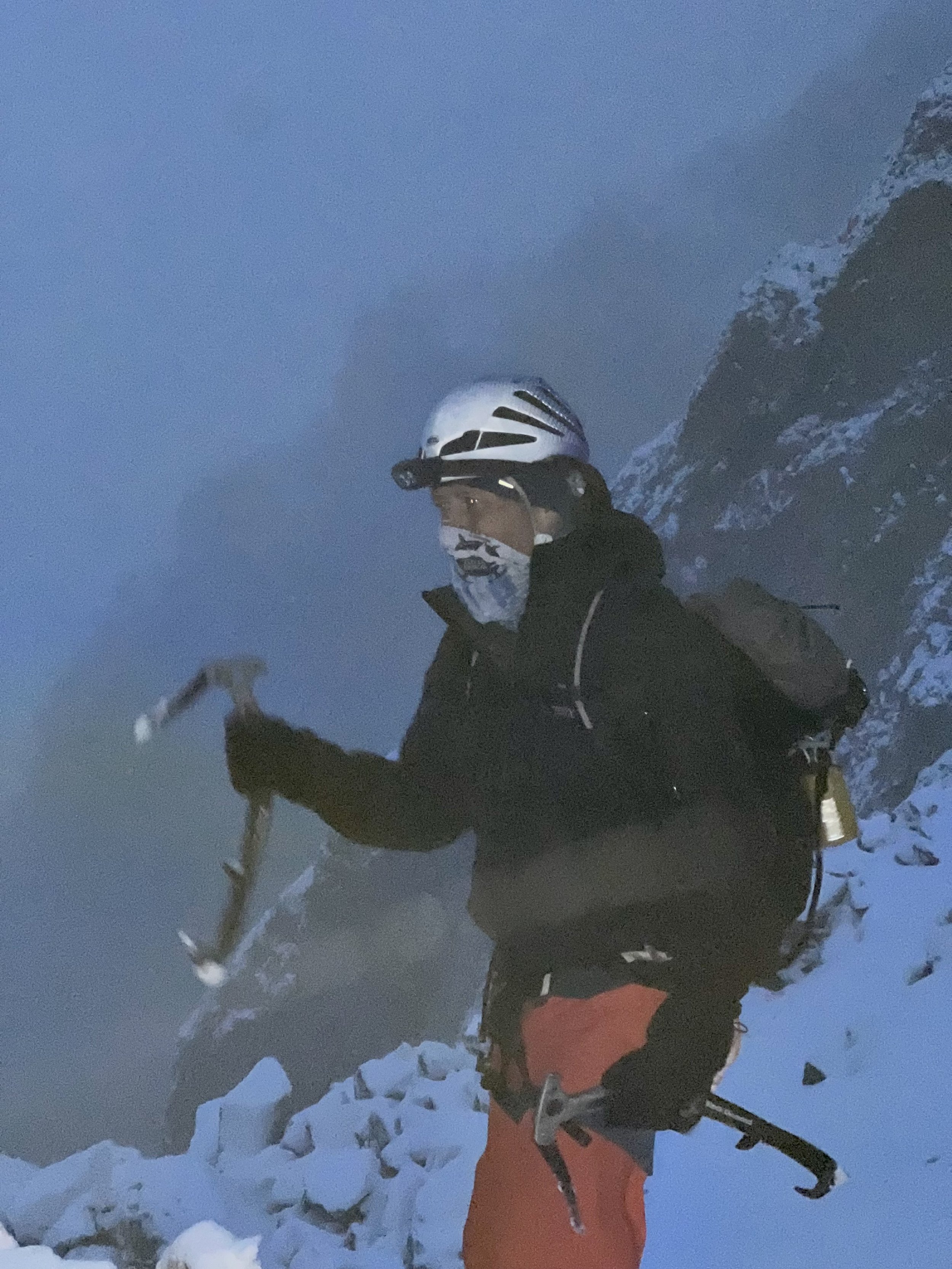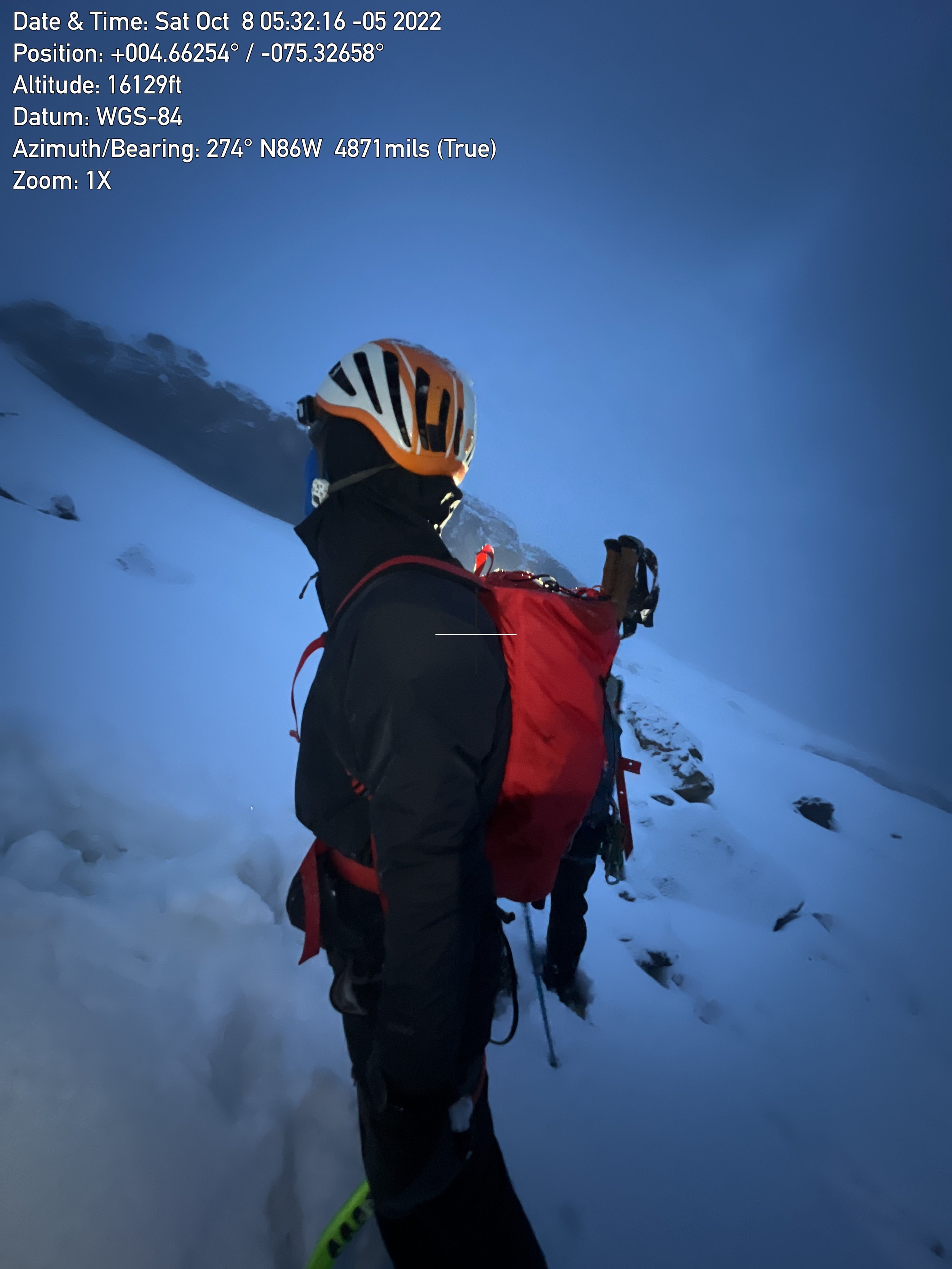Known Leadership Lessons Mountaineering
Here is my first sabbatical reflection on a few general leadership principles drilled deep into my mind each time I am in the demanding and high-stakes environment of high altitude, exposed, technical mountaineering.
Risk management: Mountaineering involves high risks, and leaders must be skilled at identifying and mitigating these risks. This includes understanding the difference between acceptable and unacceptable risks and having the courage to make difficult decisions when needed.
In October of 2022, Mitch Jessup, Ricardo, and I were 300 yards from the summit of Nevado Del Tolima in Colombia with ice axes in our hands, crampons on our boots, and a rope connecting our harnesses. The snow conditions were worsening, so we dug an avalanche test pit 5 feet deep on the open slope to examine the snowpack. Sure enough, 12 inches down was a layer of wet, icy snow. If you have ever tilted a layered cake in your car to discover the top layer of cake sliding off as the cake warms, that's avalanche conditions! At 5:30 am, the avalanche risks were increasing moment by moment.
There we stood, 300 yards from the goal, where months of training, planning, and money being spent collided with the snow conditions. The summit entices us with the allure of accomplishment. Mitch, Ricardo, and I all chose to turn back just a few strides from the summit. Risk management is about looking beyond personal desires and putting the team's best interest ahead of unacceptable risk.
“The prudent see danger and take refuge, but the simple keep going and suffer for it.”
Adaptability:
In the mountains and leadership, unpredictability is a constant. Realize that sticking to a rigid plan is only sometimes feasible. The mountains remind me to bend and shift with the terrain and the weather, molding strategies to fit the situation. Adaptability often means adjusting timelines, reallocating resources, or changing the goal. Embracing adaptability enables us to conquer the unpredictability of life.
“Mountains are not fair or unfair; they are just dangerous. You must be able to adapt yourself to the mountain, not the other way around.”
Resilience and perseverance: Climbing a mountain tests mental and physical endurance. This determination is essential in Spiritual, personal, business, and personal life. Leaders must be resilient despite setbacks and challenging circumstances and persistently push through.
We had been on our summit approach since 2 am. We were about 5 hours into our climb through rain, sleet, and snow. I was exhausted; my blood oxygen saturation was 85% due to the 17,000 feet of altitude. I was spent. The winter storm was not letting up, and I felt I had no energy stores remaining. Doubt began to set in as I looked up past Tarija Peak to the summit of Pequeno Alpamayo, another 800 feet of elevation, a climb and descent of Tarija, and a climb up the ridge away! Pedro was 3 yards ahead of me. I formulated the sentence in my mind, "Estoy gastado. Estoy muy contento con esta subida. Volvamos." Meaning, "I'm spent. I am happy with this climb. Let's go back." So I said it. But the words that came out of my mouth were, "I'm spent. Give me 90 seconds to rest, and then I'll be ready." Years of building resilience and practicing perseverance paid off at that moment. My mind was weak. But my heart wouldn't let me quit.
Resilience and determination are muscles that will atrophy if we do not put ourselves into situations that will induce hypertrophy. If you watch the linked video of me on the summit (5:15 mark), I had a little motivational speech ready. But, when I hit record on the iPhone, I was too gassed to say anything other than squeak out an, "It's awesome." However, I would never have reached the summit without these two leadership muscles.
Humility and self-awareness: Let's talk about my fall (3:37 Mark)! As Pedro was waiting for me on Tarija Peak, I stopped to gasp a couple of deep breaths before I made my way to the edge. As I approached, I toe-kicked my crampon on a rock during a step, and I stumbled. I was not scared because I knew I was falling into the small rock wall. However, I was well aware that if I included the stumble in the final video, people would freak out. So, I stood up and said to Pedro, "That will get edited out of the video." I eventually decided to leave the stumble in the final edit. Because my climb was epic, but my stumble was embarrassing.
The mountains are a powerful reminder of our insignificance in the face of nature. We leaders can learn from this humbling experience by recognizing our stumbles and allowing humility and self-awareness to drive us toward authenticity and growth. I also left that stumble in the video because I knew it would get more clicks ;-)
“The mountains have a way of dealing with overconfidence.”
©2023 Greg McNichols, All rights reserved.



